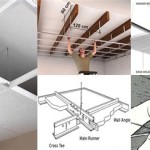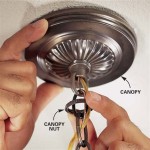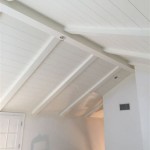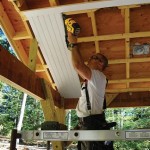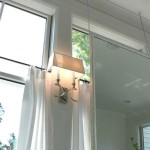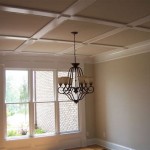How Do I Cover Air Vents In My Ceiling For Winter?
As the winter months approach, it becomes increasingly important to ensure that your home is properly insulated to maintain warmth and comfort. One often-overlooked area when it comes to insulation are ceiling air vents. These vents can allow cold air to seep in, contributing to drafts and heat loss.
Fortunately, covering air vents in your ceiling is a relatively simple and inexpensive way to improve insulation. Here's a step-by-step guide on how to do it effectively:
Step 1: Identify Vents to Cover
Determine which ceiling air vents you need to cover. Typically, vents in unused or unheated rooms, such as attics or spare bedrooms, can be covered. Avoid covering vents in rooms that need ventilation, like bathrooms or kitchens.
Step 2: Choose a Covering Material
There are several materials you can use to cover air vents. Some popular options include:
- Foam board: Lightweight and inexpensive, but not very durable.
- Plastic sheeting: Transparent and non-flammable, allowing light to pass through.
- Cardboard: Recycled and eco-friendly, but may not be moisture-resistant.
Step 3: Cut the Covering
Cut the covering material to fit the size of the air vent. Leave a small overlap around the edges to ensure a snug fit.
Step 4: Attach the Covering
There are several ways to attach the covering to the air vent. You can use:
- Tape: Apply masking tape or duct tape around the edges of the covering.
- Magnets: Use small magnets to hold the covering in place, allowing for easy removal when needed.
- Tacks: For a more permanent solution, use thumbtacks or upholstery tacks to fix the covering to the vent.
Step 5: Seal the Edges
Once the covering is attached, seal the edges to prevent air leakage. You can use caulk or weatherstripping to fill any gaps.
Additional Tips for Covering Vents
- Do not block all vents: It's important to maintain some ventilation in your home to prevent moisture build-up and air quality issues.
- Remove covers when not in use: During warmer months, remove the vent covers to allow for airflow and prevent overheating.
- Cover vents in unoccupied rooms: Focus on covering vents in rooms that are not regularly used or heated to minimize heat loss.
- Consider vent inserts: Vent inserts are designed to fit inside air vents and provide additional insulation while allowing some airflow.
Benefits of Covering Air Vents in Winter
Covering air vents in your ceiling during winter offers numerous benefits, including:- Improved insulation: Reduces heat loss through vents, keeping your home warmer.
- Reduced drafts: Prevents cold air from seeping in, eliminating uncomfortable drafts.
- Lower heating costs: By improving insulation, you can reduce the demand on your heating system, leading to potential energy savings.
- Increased comfort: A warmer and draft-free home contributes to overall comfort and well-being during cold weather.

Winter Hvac 10 Steps Instructables

Changing All My A C Heating Ceiling Vents For Better Airflow Between Naps On The Porch

3 Things You Can Do Today To More Evenly Heat Your Home

Do You Need To Cover Your Attic Vents In The Winter
The Drywall Around My Ceiling Air Vent Is All Broken Up What Can I Fill Space With So A New Cover Be Ed In Quora

Changing All My A C Heating Ceiling Vents For Better Airflow Between Naps On The Porch

How To Open And Close Ceiling Air Vents

Should You Cover Roof Vents In The Winter Hvac Com

Should You Cover Roof Vents In Winter

Adjust Cold Air Return Vents For Fall
Related Posts

